














New showrooms now open at Bypass Nurseries, Capel St Mary and Glasswells, Ipswich
















New showrooms now open at Bypass Nurseries, Capel St Mary and Glasswells, Ipswich

Colchester Foodbank, a vital lifeline for countless families in our community, is urgently searching for a new home. We extend our deepest gratitude to Tollgate Partnership Limited for their unwavering support. They generously provided us with temporary space to operate the foodbank, allowing us to serve our community. However, as our mission grows, it's time to find a permanent location.
As the central hub of Colchester's efforts to combat food insecurity, we are turning to our amazing and supportive community for help in finding a new home. For years, Colchester Foodbank has provided nutritious food and holistic support services aimed at addressing the root causes of food and fuel poverty within our community. We have also restored a sense of dignity to those we have helped. Without a new location, our ability to continue serving the community is at risk.
“We have always believed in the power of community, and now, more than ever, we need that community to join us in finding a new home," said Nikki Ranson and Armin Lange, Co-Directors of Colchester Foodbank. "Our mission to ensure that no one in Colchester goes hungry is unwavering,
but we need a new space to continue this essential work.”
We are appealing to all landlords, business owners, and the wider public to help us find a suitable location that can accommodate our operations. Ideally, we need a space that is accessible, centrally located, and large enough to store and distribute food to the hundreds of individuals and families who rely on us each week.
Daily, we witness the impact of your generosity – mothers and fathers able to feed their children, elderly individuals finding comfort in a warm meal, and our struggling neighbours given a lifeline. Your support in helping us secure a new home will allow us to continue this vital work and touch even more lives.
If you know of any available properties or if you can offer any assistance, please contact us at info@colchester.foodbank.org.uk or by phone at 01206 621998. Together, we can ensure that Colchester Foodbank remains a steadfast pillar of support in Colchester.
From the bottom of our hearts, thank you for your unwavering support and for being a part of our mission to nourish our community.



ACROSS
1 Thus the present may be seen (9)
6 Ourtageous quote for a hat (5)
9 The lingo confused flier in Herts town (8,7)
10 Boy runs inside for a haircut perhaps (4)
11 Dog imbibes nothing but tea (5)
12 Somewhat nasty encounter providing discomfort for the viewer (4)
15 Put up with computer problem first of all, but it’s a pet hate (7)
16 Settles for old-fashioned types (7)
17 After a bit of drink old fellows fall asleep (4,3)
19 Irritable if constrained to give evidence (7)
20 Fruit found in fridges on odd visits (4)
21 Egg producer wants zero change (5)
22 One vehicle or another heading for Telford (4)
26 Being made, but not enough being made (15)
27 After short time I beat giant (5)
28 He doesn’t approve of new residents (9) DOWN
1 With solar illumination, first off? Yes and no (5)
2 I go into Watford, perhaps to take in good play(7,3,5)
3 Former tennis player wants a woman (4)
4 Innovator, one needing external support (7)
5 Suspicious American friend returns and promises to pay (7)
6 It is heard in confusion (4)
7 One of eight competing in qualifier rants wildly about team’s leader (7-8)
8 Ned’s yells unsettled continually (9)
13 Brave fellow meets new bird (5)
14 Visitor made an estimate for the audience (5)
15 But fey lad comes unstuck because of failure to act (2,7)
18 Excited always when given meal outside (7)
19 Gets bored taking in a daughter’s rants (7)
23 He sings a number at start of opera, right? (5)
24 Rex gets stuck into booze with a smile (4)
25 Spots champion outside Nag’s Head (4)



























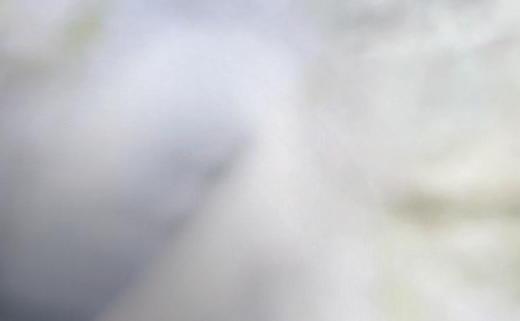
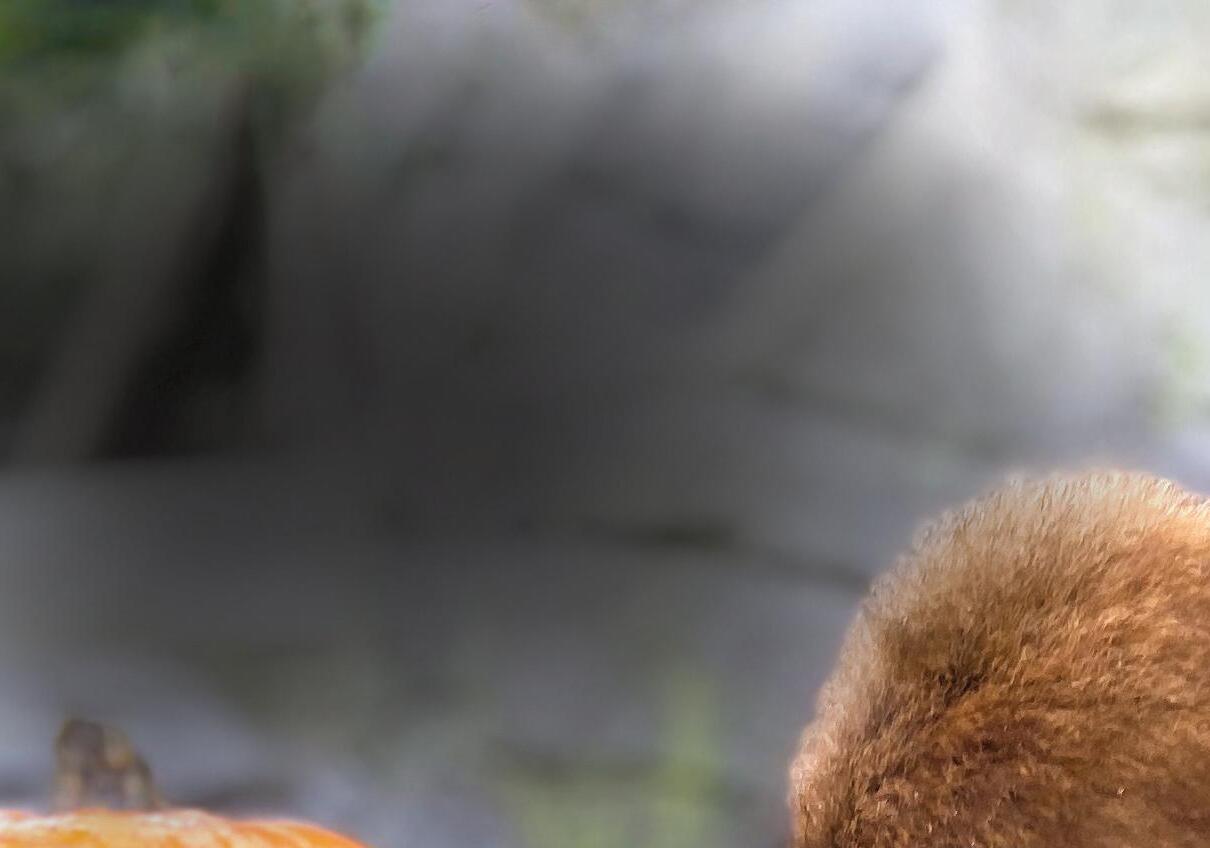













































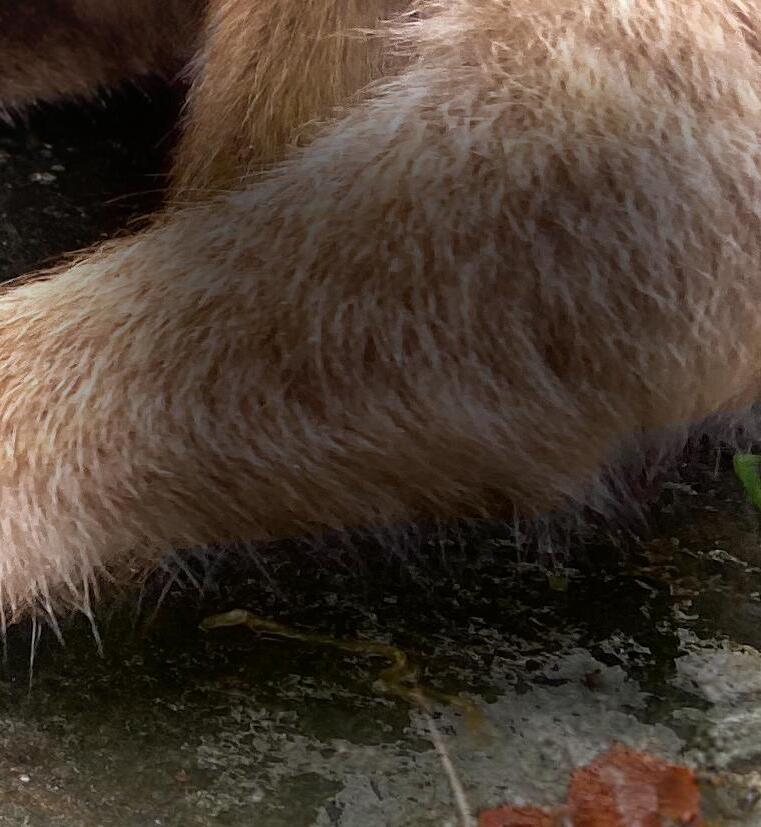


































































































































































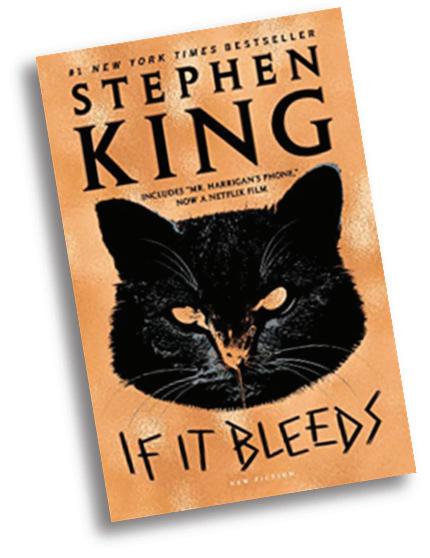
If It Bleeds by Stephen King
This is a collection of four compelling novellas that showcase King's mastery of storytelling.
Mr. Harrigan’s Phone: Craig, a young boy in a small town, befriends the reclusive and wealthy Mr. Harrigan. After Mr. Harrigan's death, Craig continues to text his old phone, which was buried with him, and astonishingly, receives responses. The story explores themes of friendship, technology, and the supernatural consequences of the digital age.
The Life of Chuck: This novella is told in three acts, beginning with the end. It chronicles the life of Chuck Krantz in reverse, starting with the apocalypse and moving
backward to his childhood. The story is a meditation on the significance of individual lives and the marks they leave on the world, blending reality with magical realism.
If It Bleeds: A sequel to another story,"The Outsider," this novella follows Holly Gibney of the Finders Keepers detective agency as she investigates a school bombing. Holly discovers that the reporter on the scene, Chet Ondowsky, is not who he seems. As she digs deeper, she uncovers a shapeshifting entity that feeds on human suffering, leading to a tense confrontation. This story highlights themes of resilience and the battle between good and evil.
Rat: Drew Larson, a struggling writer, retreats to a remote cabin to finish his novel. Stricken with writer’s block and a series of unfortunate events, he makes a Faustian bargain with a rat, trading his success for a friend's life. The story examines the dark side of ambition, the cost of creativity, and the moral dilemmas faced by individuals in pursuit of their dreams.
Stephen King's ability to weave intricate tales that delve deep into the human psyche is legendary. And these four unconnected novellas are perfect for a bit of spooky-yet-easily digestible Halloween reading.
The Haunting of Aveline Jones by Phi Hickes
This enchanting and eerie tale, tells the story of Aveline Jones, a young girl who is sent to stay with her Aunt Lilian in the seaside town of Malmouth during her autumn break. While exploring the town, Aveline stumbles upon a dusty old book of ghost stories in a secondhand bookstore. Intrigued by the tales within, she discovers that one of the stories involves a girl named Primrose Penberthy who mysteriously disappeared thirty years ago.
As Aveline delves deeper into the book, she starts experiencing strange occurrences and eerie sightings, leading her to believe that Primrose’s ghost is trying to communicate with her. Determined to uncover the truth, Aveline investigates Primrose's disappearance, despite her aunt's
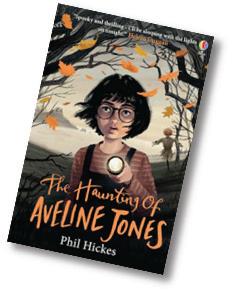
warnings and the townspeople’s reluctance to discuss the past.
Aveline's curiosity leads her to uncover dark secrets about Malmouth and its history. She learns that Primrose's disappearance is tied to a chilling legend and that the ghostly encounters she experiences are linked to a malevolent presence in the town. Will Aveline and her new friend Will, be brave enough to confront the supernatural forces at play, and bring peace to Primrose's restless spirit?
"The Haunting of Aveline Jones" is a suspenseful and atmospheric tale of courage, mystery, and the supernatural. Perfect for an October fireside read.
By Tash Donovan

A special thank you print to frame Updates on how your donation is changing lives Your regular gift of just £5 a month could go towards supporting young cancer patients through our Care Packages, Age-appropriate Rooms in hospitals and Research.
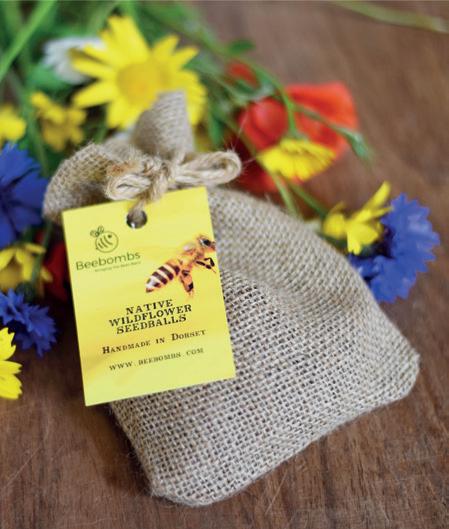
Not only will you be giving a brighter future to teenagers and young adults with cancer but also a future to bees, wildlife, and the environment.

As a thank for your monthly donation, you will receive Your very own handmade, native bag of Beebombs to sow




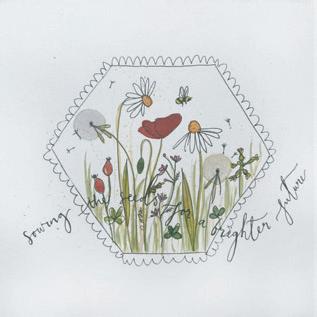























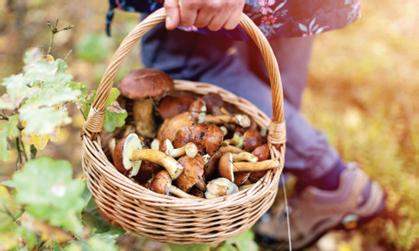
Autumn in the UK is a season rich with charm and tradition. Here are five reasons to fall in love with this time of year:
Spectacular Autumn Foliage: The UK is home to some of the most breathtaking autumnal landscapes. From the woodlands in the Lake District to the golden hues of the Cotswolds, the countryside is ablaze with colour at this time of year. Even city parks, like London’s Hyde Park or Edinburgh’s Royal Botanic Garden, offer stunning autumn displays.
Bonfire Night: A uniquely British tradition, Bonfire Night on November 5th is a highlight of the autumn season. It’s a night filled with fireworks, bonfires, and the smell of roasting marshmallows. The historical significance of Guy Fawkes’ failed Gunpowder Plot adds an element of intrigue to the festivities.
Cozy Pub Culture: As the weather cools, there’s nothing quite like the
warmth of a traditional British pub. Autumn is the perfect time to enjoy a hearty meal by the fire, sample seasonal ales, or simply relax with a hot drink in the snug atmosphere of a country inn.
Seasonal Produce: Autumn brings a bounty of fresh, local produce to the UK. From apples and pears to root vegetables and game meats, the season offers the perfect ingredients for comforting dishes like roast dinners, stews, and pies. Farmers’ markets across the country brim with these autumnal delights.
Mushroom foraging: If you’re a mushroom-lover, October is definitely the month for you. Join an organised mushroom walk and learn about unusual, tasty varieties as well as which ones to avoid!
October is a wonderful time of year so pull on your jeans and boots and head out for some autumn fun.
By Gemma Brown



Graceful, drooping tree (6)
______ Wisdom (actor) (6)
Giant, usually evil (4) 10 They pull Santa's sleigh! (8)
British seaside town (11)
Used to disguise or conceal (5,6) 18 Broadcast, relay (8)
Ruler of Mt. Olympus. (4)
Apparition, hallucination (6)
(6)
realm or province (7)
Abscond, scarper (4)
Deviate, sidestep (6)
Intense blue-purple (6)
Animal that catches and eats others (8)
Blanched, washed-out (5)
Fanciful, impractical (8)
Mexican alcoholic drink (7)
Japanese garment (6)
Appease, sooth (6) 17 Plait, weave (5) 19 Vivacity, zeal (4)







While very few people now qualify for a free COVID vaccine, many groups of people qualify for a free flu jab, including those over 65, diabetics, asthmatics, people with chronic heart, liver or kidney disease, people with BMI over 40, carers and frontline health workers.
What many people don’t realise is that even if you don’t fall into one of the ‘at risk’ categories a flu jab is still a sensible precaution. You’ll have to pay, but it’s inexpensive (generally under £20) and many pharmacists administer the vaccine on their premises, so you won’t have to book an appointment with your GP or take time off work.
Why should an otherwise healthy person need a flu vaccine? Well, seasonal flu is a substantial and unpleasant illness, far worse than the common cold, with which it’s sometimes confused. Flu generally requires a week or so off work to recover and can trigger other conditions like bronchitis or pneumonia.
The average person with flu infects one or two other people through sneezing, coughing and touch. If you work with the general public, in a shop or hair salon for example, you are more at risk of being exposed to the virus so you might consider a flu jab a worthwhile investment.
A business owner may consider the impact a week off sick would have on their business and opt to protect themself for that reason.
Children are much more likely to pick up and pass on bugs as they are in such close proximity to each other all day. For this reason, teachers and parents might think it wise to have a jab.
Flu jabs are generally safe unless you have an allergy to eggs or have had a previous allergic reaction to a shot. So, discuss protecting yourself with your pharmacist today.
By Sarah Davey
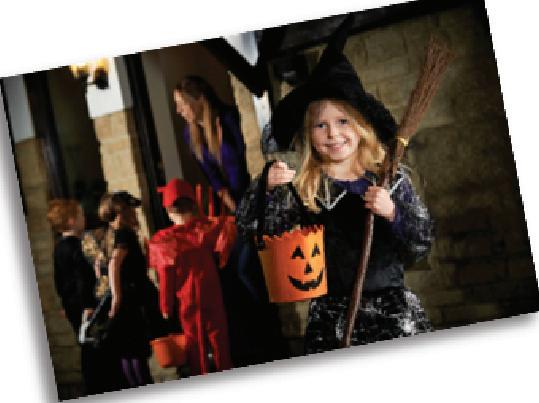
it, October 31st will bring with it groups of spookily clad youngsters, going door to door shouting 'Trick or treat!' As they venture out into the night, it’s important for both trick-or-treaters and homeowners to observe some etiquette to ensure a fun and respectful evening for all.
Costumes and Manners: Dress up in your best costumes and be sure to say "please" and "thank you" when collecting treats. Politeness goes a long way in making a positive impression.
Respect Homes: Only visit homes that are clearly participating. A good indicator is if the house is decorated or has a lit pumpkin outside. If a house is dark or unadorned, it’s polite to move on. Not everyone likes unannounced visitors, no matter how cute they look.
Timing is Key: Stick to the early evening, ideally between 5 pm and 8 pm. This ensures you’re not disturbing households too late at night.
ective clothing to stay visible.
Householders
Signal Participation: If you’re happy to welcome trick-or-treaters, make it clear with decorations, a lit pumpkin, or leaving the porch light on.
Treats Only: Provide wrapped sweets and chocolates for hygiene and safety.
Respectful Refusals: If you prefer not to participate, it’s perfectly acceptable. Simply leave your exterior lights off and consider putting up a polite sign indicating you’re not taking part.
Be Inclusive: Consider offering non-food treats as well for children with allergies or dietary restrictions, such as stickers or small toys.
By following these simple guidelines, both trick-or-treaters and homeowners can enjoy a spooky, safe, and happy Halloween.
By Gemma Brown
puzzle solutions:



As the clocks go back and the nights draw in take comfort in our onion soup, topped with crunchy bread and bubbling cheese
Preparation
Ingredients
12oz / 350g onions (can use a mixture of brown, red and white or all the same variety)
Butter for frying
1 1/2 tsp Demerara sugar
2 tsp dark soy sauce
Method
Peel and thinly slice the onions. Heat the butter in a medium-sized saucepan.
Add the onions and sugar and fry gently over a low heat for 10-20 minutes, stirring frequently. The sugar will caramelise to a nice golden brown coating on the
1 pint stock (chicken stock is lighter, beef stock heartier)
2 thick slices lightly toasted bread
2oz / 50g cheddar or Gruyere cheese
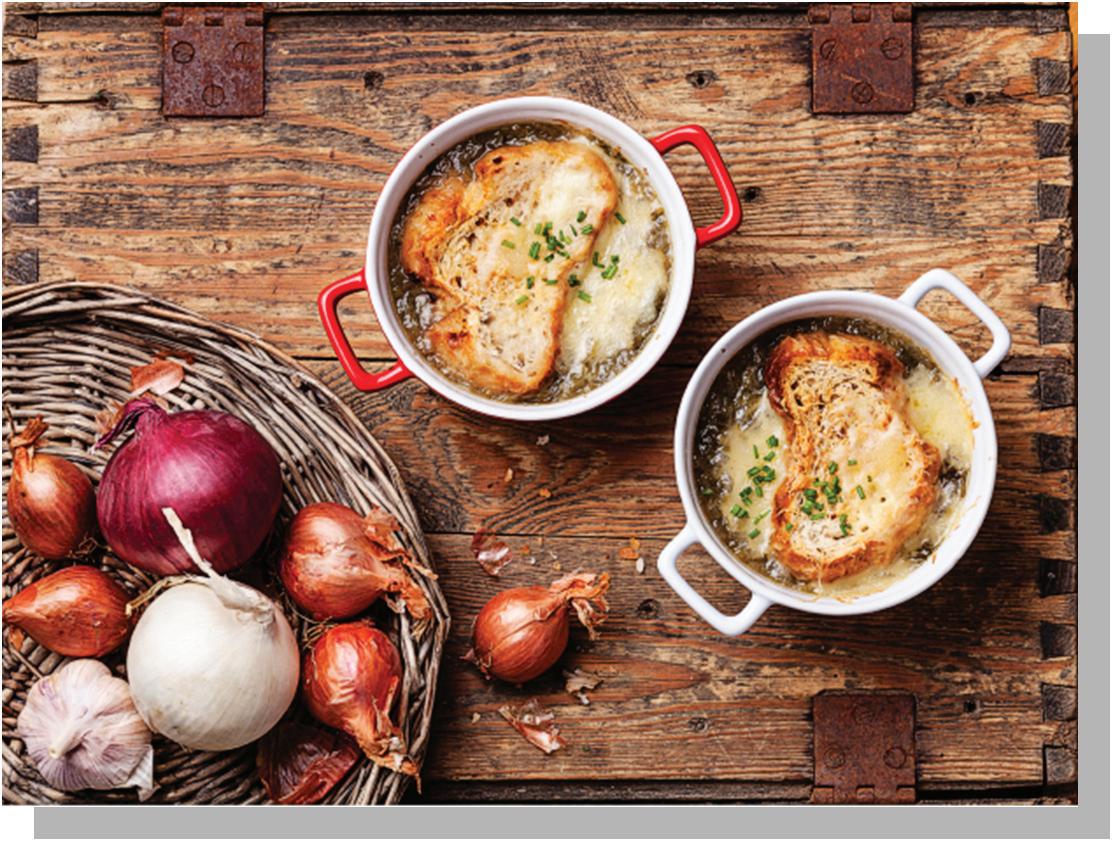
onions. Be careful not to let it stick and burn though, especially towards the end.
Add the stock and soy sauce, and season to taste with salt and black pepper.
Put a lid on the pan and simmer for approximately 30 minutes until



the onions are soft and starting to disintegrate.
Grate or thinly slice the cheese.
Divide the soup between two heatproof bowls. Float a slice of toasted bread on top of each bowl of soup, and top with the sliced or grated cheese.



Grill for 2-3 minutes until the cheese is melted and bubbling (which is why you have to use heatproof soup bowls!)
Serve with more crusty fresh bread.


Many of us will consider planting a hedge along the boundary of our property. Hedges buffer sound and offer a degree of privacy. While privet and leylandii remain popular choices for quick, dense hedges, I prefer a natural hedgerow, composed of a mix of native shrubs and trees, A natural hedge will promote biodiversity, providing food and shelter for birds, insects, and other wildlife. This creates a vibrant ecosystem in your garden, enhancing its beauty and ecological value.
Natural hedgerows are also more sustainable. They are better adapted to local soil and climate conditions, which means they require less maintenance and less chemical input like fertilizer and pesticide. They have a softer, less formal appearance, which will add charm and character to your garden.
When choosing plants for a natural hedgerow, consider a mix of native species that will provide year-round interest and habitat value. Here are some excellent choices:
Hawthorn (Crataegus monogyna): Known for its white spring flowers and red autumn berries, hawthorn is a hardy and versatile choice.
Blackthorn (Prunus spinosa): This plant produces white flowers in early spring and sloes in autumn, which are loved by wildlife.
Hazel (Corylus avellana): With catkins in late winter and edible nuts in autumn, hazel is both decorative and beneficial.
Field Maple (Acer campestre): A small tree with lovely autumn colour, it’s perfect for adding height and diversity.
Dog Rose (Rosa canina): This climbing shrub offers beautiful pink flowers in summer and bright red hips in autumn.
The best time to plant your hedgerow is from now until early spring, when the plants are dormant. Follow these steps to maximise your chance of success:
Preparation: Clear the planting area of weeds and grass. Dig a trench about 30cm wide and 30cm deep.
Spacing: Plant shrubs at intervals of 30-45cm. For a thicker hedge, plant in a double staggered row, with about 45cm between the rows.
Planting: Place each plant in the trench, ensuring the roots are well-spread. Fill in with soil, firming it around the roots, and water well.
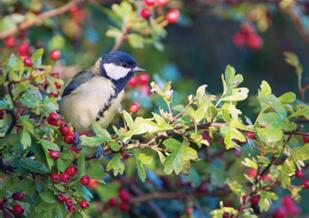
Mulching: Apply a thick layer of mulch to suppress weeds and retain moisture.
A natural hedgerow requires minimal maintenance, but a few key tasks will keep it healthy and thriving:
Water: Ensure young plants are watered during dry spells until they are well-established.
Weed: Keep the base of the hedgerow free from weeds to reduce competition for nutrients and water.
Prune: Lightly prune in late winter to maintain shape and encourage dense growth. Avoid heavy pruning as it can reduce flowering and fruiting.
Feed: Apply a slow-release organic fertilizer in early spring to promote vigorous growth.
Embrace the charm of a natural hedgerow. It not only contributes to a beautiful garden but also supports local wildlife and contributes to a healthier environment.
Happy gardening. By Rachael
Leverton


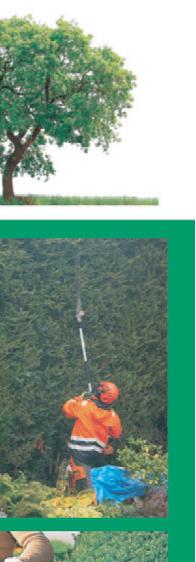









Unblocktober is a month-long national campaign aimed at improving the health of our drains, sewers, and watercourses. Held every October since 2019, it encourages individuals, households, and businesses to adopt better habits that prevent blockages and reduce environmental pollution.
During October there will be a public awareness campaign to highlight the problems caused by improper waste disposal. It will focus on educating people about what should and shouldn’t go down our drains and toilets. Everyday items like wet wipes, fats, oils, and grease (collectively known as FOG) can cause significant blockages, leading to 'fatbergs' and other costly plumbing issues.
Unblocktober is important for several reasons:
Environmental Protection: Improper waste disposal can lead to blocked sewers, which in turn can cause raw sewage to overflow into rivers, streams, and oceans. This pollutes our waterways, harming wildlife and disrupting ecosystems.
Preventing Fatbergs: Fatbergs are massive accumulations of FOG and non-biodegradable items. They can cause extensive damage to sewer systems, leading to expensive repairs and increased water bills for everyone.
Public Health: Blocked sewers can lead to flooding and sewage overflows, posing serious health risks to the community.

Joining in Unblocktober is simple and impactful:
Mindful Disposal: Avoid pouring fats, oils, and grease down the sink. Instead, let them cool and dispose of them in the bin.
Flush Wisely: Only flush the three Ps: pee, poo, and (toilet) paper. Dispose of wet wipes, sanitary products, and other nonbiodegradable items in the rubbish.
Spread the Word: Raise awareness by sharing tips and information about Unblocktober with friends, family, and colleagues.
By adopting these practices, you can help protect the environment, prevent costly plumbing problems, and ensure cleaner, healthier waterways. Join Unblocktober and be part of the solution!
Knitting and crochet have been enjoying a resurgence in popularity among all generations over the past few years.
Both crafts have rich histories spanning centuries and have evolved from practical necessities to creative artistic hobbies.
The exact origins of knitting remain uncertain, but the oldest known knitted artifacts are socks from Egypt dating to the 11th century CE. These finely-crafted footwear items, featured complex use of colour and short row heels, suggesting that knitting techniques were already welldeveloped by this time. Earlier fabric-making techniques like nålebinding, (knotless knitting) which uses a single needle to create loops, were precursors and date back some 6000 years. Some Romano-Egyptian toe-socks from the 3rd-5th centuries CE have structures so similar to knitting that the "Coptic stitch" of nålebinding is considered the most likely forerunner.
Knitting probably spread from the Middle East to Europe between 1000-1500 CE. By the 13th century, skilled Muslim knitters were employed by Spanish Christian royal families, as evidenced by intricate knitted items found in royal tombs. The 14th century saw
knitting become more widespread across Europe. Archaeological finds from medieval cities and tax records indicate knitted goods were in common everyday use. There was even a fashion during this era for painting the Virgin Mary knitting. These paintings are collectively known as the knitting Madonnas.
The invention of the mechanical knitting machine by William Lee in 1589 marked a significant turning point. It was initially rejected by Queen Elizabeth I, who thought it might cause increased unemployment during a period of economic depression, but his innovation eventually revolutionized textile production.
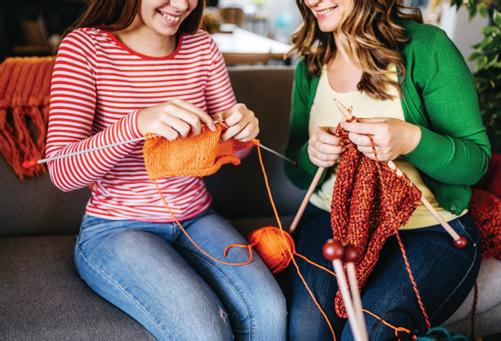
In the Victorian era, hand knitting became a popular parlour craft, and was used to create fine laces, bags, and baby clothes. The early 20th century knitting was popularised by British royalty and Parisian designers.
Crochet is a younger craft than knitting and is believed to have developed in the early
19th century. It seems to have evolved from an ancient form of embroidery used in Turkey (now Türkiye), India, Persia (now Iran), and North Africa. Crochet gained popularity in Europe in the 1800s as a less expensive alternative to lace. Queen Victoria learned to crochet and helped popularize the craft. During the Irish potato famine of the 1840s, crochet became an important source of income for many Irish women. Both knitting and crochet increased in popularity during the
World Wars, as women made socks and mittens for the troops.
Today, knitting and crochet continue to evolve with new techniques, materials, and applications. They're used not only for traditional garments and accessories but also in fine art, sculpture, and even scientific applications such as wearable electronics and soft robotics. Proving that knitting and crochet are enduring and adaptable crafts.
By Sarah Davey
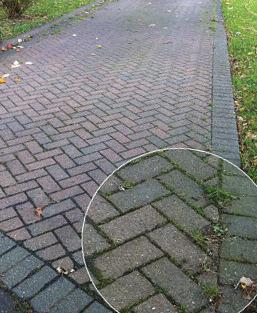



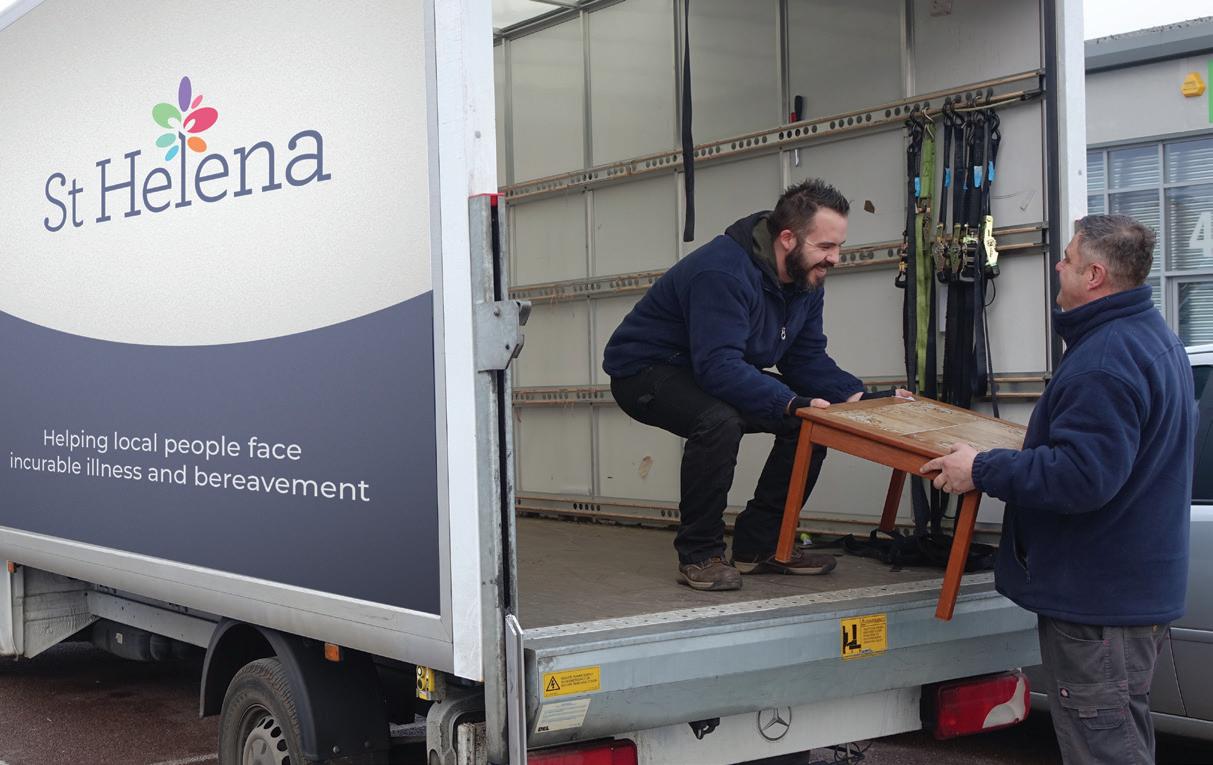
7 Suitable colour scheme given to interior of house (8)
9 One having a peep at attractive woman (6)
10 Some admit Chris is an irritation (4)
11 Some larks give rise to great delight (10)
12 Havng superior quality, exude largess initially when working (2,4)
14 Eccentric partner keeps one marine reptile (8)
15 I pay a rent, originally designed to get place for workers (6)
16 Old fellows given one church duty (6)
19 Orwell’s pig is a 25 Across (8)
21 Earth is scattered around new part of plant (6)
23 Spurs team’s struggling to appear adequate (4,6)
24 Headgear to go with oriental garment (4)
25 Informer finds tin with 10 Across (6)
26 Sounds like meal’s untouched in Warwickshire town (8)
DOWN
1 Item of furniture needs fixed support (6)
2 Boy rejected hot food (4)
3 Refrain from taking Ecstasy with older family member (8)
4 Changing rules takes time in Irish province (6)
5 Deny Diana is involved in agreement (10)
6 Note pay increase and learn it by heart (8)
8 It may be sung in humble dwelling (6)
13 Almost the whole of creation goes to city, we hear – Oxford perhaps (10)
15 Familiarise Bill with unusual antique out East(8)
17 Outrageous tirade about the Union Jack? (8)
18 Idiot caught with mixture of nitre (6)
20 Shows amusement when lass endlessly conceals disgusted expression (6)
22 Use stratagem to pursue half of them (6)
24 Bit of paper from African country (4)
Fill in the grid so that each row, column and 3x3 box, contains the numbers 1 through to 9 with no repetition.
You don’t need to be a genius. These puzzles use logic alone. Watch out! Sudoku is highly addictive.

Arguments about screen time rage in households around the UK, and with kids using phones and tablets at ever younger ages, should we be concerned?
Recent research has found a correlation between the age at which a child receives their first smartphone or tablet and the severity of mental health issues they report as young adults, particularly in girls. 74% of females who received their first device at age 6 experienced mental health challenges, compared with 46% for those who received it at age 18.
In addition, it was found that toddlers who used tablets for 75 minutes or more daily at age 3-4 were more prone to angry outbursts a year later, suggesting excessive screen time may interfere with emotional regulation skills.
Device ownership among children is high in the UK, with 91% of children owning a smartphone by age 11 (including mine). As parents it seems we employ various strategies to manage screen time:
Time limits – Many of us use apps like Google's Family Link to restrict screen time.
Content monitoring – Most of us at least try to monitor the content our children consume online.
Delayed ownership - Some families choose to delay giving children their own devices. We held out until ours started senior school, as did most of our friends. I’d have preferred to wait longer but peer pressure was strong (their peers and ours!)
Educational use – Some parents (including one of my friends) only allow screens for educational purposes. This requires boss-level parental monitoring, and we are not those parents, but all credit to her for trying.
There’s no universal consensus on the ideal age for device ownership, or optimal screen time. However, most experts agree that delaying device ownership is a good idea. The longer the delay, the better for our kids’ long-term mental health.


They also agree that parents should use monitoring services to keep tabs on their offspring’s online activities.
Child development experts (and most parents I know) feel strongly that device use should not detract from other crucial developmental activities, such as playing, sport, and socialising, and that parents should actively teach digital literacy skills.
As technology continues to evolve, so will our understanding of its impact on child development. Ofcom, the UK's communications regulator has plans to develop
proposals on using AI to detect illegal content which might cause harm to children online.
Smartphones and tablets are wonderful tools, which offer many benefits, but perhaps we should be more aware of the dangers and acknowledge that as parents we should be managing this: delaying device ownership; setting clear boundaries, and actively engaging with our kids’ digital experiences. As research in this field progresses, guidelines will likely become more refined, and hopefully help us navigate the complex landscape of childhood in the digital age.
By Sadia Khan



Are you going to watch a horror movie, read a scary story, or go on a ghost walk this Halloween?
The truth is, that most of us love a bit of scary spookiness, especially at this time of year. The allure of fear is a fascinating aspect of human psychology, so why do we love to be a little bit scared? At the heart of this phenomenon is the concept of "safe fear." This type of fear occurs in controlled environments where we know, on some level, that we are not in real danger. Our brains can distinguish between actual threats and simulated ones, allowing us to experience the fear without the associated risks. This distinction is crucial because it turns a potentially harmful emotion into an exhilarating one. Psychologist Paul Rozin dubbed this phenomenon ‘benign masochism.’ aspect of enjoying fear is the concept of "benign masochism." When we encounter a real-life
scary situation, our bodies react with a fight-or-flight response, releasing adrenaline and other stress hormones. This response heightens our senses, increases our heart rate, and boosts our energy levels. In a safe environment, these physiological reactions can actually be enjoyable, creating a rush of excitement and euphoria, similar to that experienced by athletes during intense physical activity. This "adrenaline rush" is a key reason why people seek out frightening experiences.
Facing fears in a controlled setting can also provide a sense of accomplishment and empowerment. Overcoming a scary situation, like watching a horror movie alone or navigating a haunted house, can lead to a feeling of triumph and increased self-confidence. It allows individuals to test their limits and confront their anxieties in a way that is both challenging and rewarding.
On Monday 16 September, important work will begin at the Albert roundabout in Colchester, with the aim of making the city more welcoming to visitors arriving in the city.
As part of the "Fixing the Link" initiative, the project aims to improve first impressions of Colchester for people arriving at the train station. The work, funded by Essex County Council, Colchester City Council and Greater Anglia, will take place overnight for two weeks and will involve removing the top layer of soil from the roundabout. This soil will be reused in the new Meanwhile Garden at Firstsite, which with no cost to the community has been designed and planted, by the well-known team at Beth Chatto Gardens working along with other local business and charities and community groups.
The topsoil from the roundabout will be replaced with sand sourced from a local quarry, which ensures no weed seeds are introduced and also provides a low nutrient substrate for planting into for good root establishment and long-term health of the plants.

Social factors also play a significant role in our attraction to fear. Sharing a scary experience with friends or loved ones actually strengthens social bonds. When people experience fear together, they often support and comfort each other, enhancing group cohesion and creating lasting memories. The shared experience of surviving a frightening event can foster a sense of camaraderie and connection.
Furthermore, scary experiences can provide a temporary escape from everyday stress and monotony. Immersing oneself in a thrilling situation can divert attention from real-life worries and provide a mental break. This diversion can be particularly appealing in today's
fast-paced, high-stress world, offering a form of escapism that is both intense and cathartic.
There are a few of us though who really don’t like to be scared. We hate even benign surprises, so definitely can’t cope with the fear induced by horror movies. This may be because our nervous systems are too easily overstimulated, or it could be because our ‘sweet spot’ for enjoying fear is vastly out of kilter with our peers.
So, as you settle down to enjoy a ‘jump scare’ horror movie this Halloween, now you know why it’s so much fun, but also why your partner or friend refuses to join you!
By Lisa Johnson
Beth Chatto’s expert horticultural team has also designed the planting scheme for the Albert roundabout and will be responsible for the planting itself. The specially designed drought-tolerant planting will require minimal watering and maintenance, helping to keep long-term costs down. Plants have been carefully chosen for their benefit to wildlife. Additionally, habitat mounds will be created on the roundabout to encourage a variety of insects to make their home.
The "Thank you NHS" sign, which was placed on the roundabout during the COVID-19 lockdown, will also be moved to the Meanwhile Garden. This garden, created on a previously unused site, will offer a peaceful space in the city centre where people can enjoy a mix of ornamental plants alongside wild growth.
The Fixing the Link initiative, initially inspired by Colchester's historical ties to elephants, includes public art and wayfinding improvements along the one-mile route from Colchester train station to the city centre. The project not only aims to make the city more attractive but also encourages people

to walk from the train station to the city centre more often.
Cllr Luxford Vaughan, Portfolio Holder for Planning, Environment and Sustainability, said: "We are pleased to be working with partners like Beth Chatto and Essex Highways to make Colchester a more attractive and accessible place. This project is about making more enjoyable for people who walk. By supporting sustainable travel, we’re helping to create a healthier, more connected community. The improvements at the Albert roundabout and the creation of the Meanwhile Garden are great examples of how we can work together to achieve these goals.”
Julia Boulton, CEO of Beth Chatto Gardens and Beth Chatto’s Granddaughter, said: “We are excited to be working with Essex County Council, Colchester City Council
and Greater Anglia on their project ‘Fixing the Link’. The planting will be a different aesthetic to that usually applied to municipal spaces. We are using over 80 different species to create a beautiful and abundant planting which will not only nurture wildlife, but also reduce ongoing maintenance needs. It isn’t going to be a replica of the Gardens here in Elmstead Market as there are many issues that need to be considered when planting next to a road, for instance planting within the first 10 metres of the edge must be a maximum height of 50cm. We will be planting over 2,800 individual plants.”
While the work is being done, one lane will be closed overnight on the approach to the Albert roundabout, affecting North Station Road, Cowdray Avenue, and Colne Bank Avenue. Journey times should not be affected by this work.

The waters around the property market may be choppy, but with the Michaels crew at the helm, we’ll get you to where you really want to be... simply pop in or call our Colchester office to arrange a free mortgage health check and to register with us for updates on property prices and interest rates today.